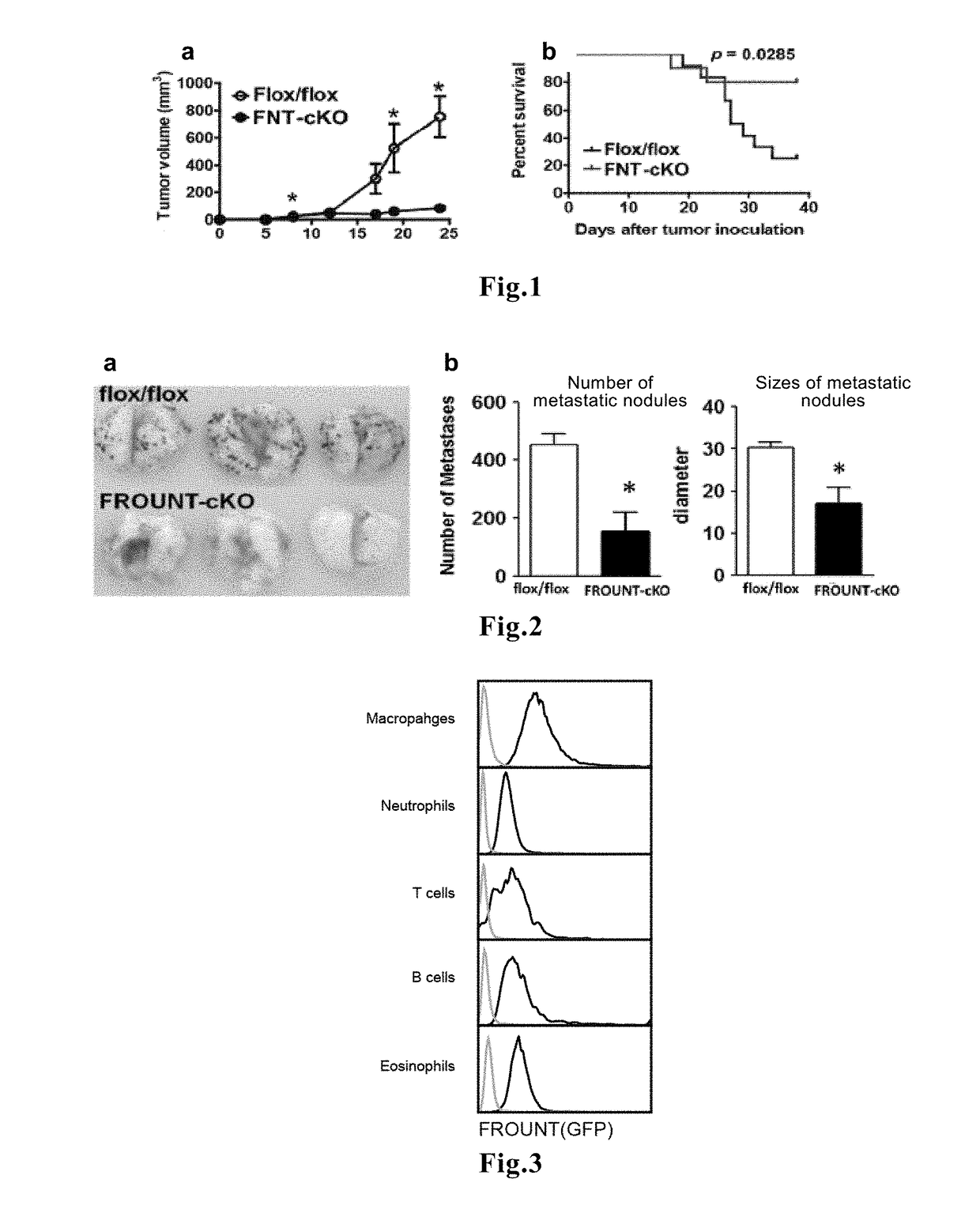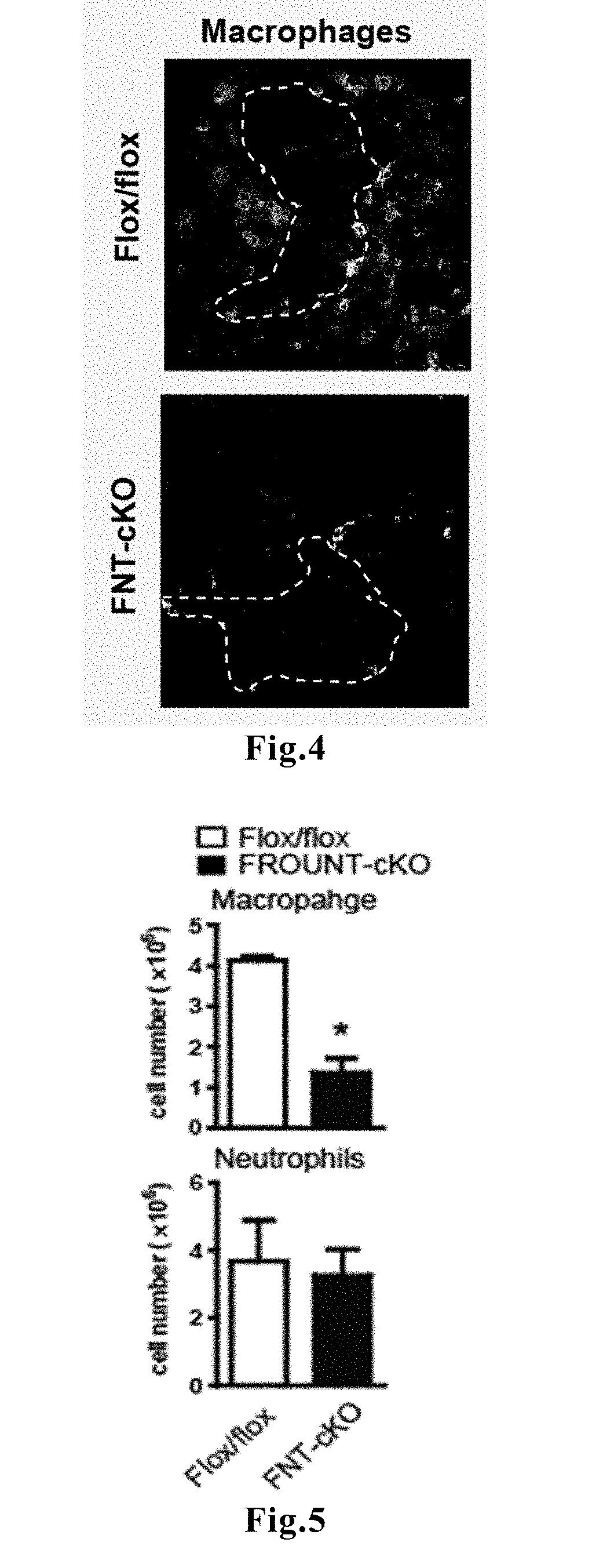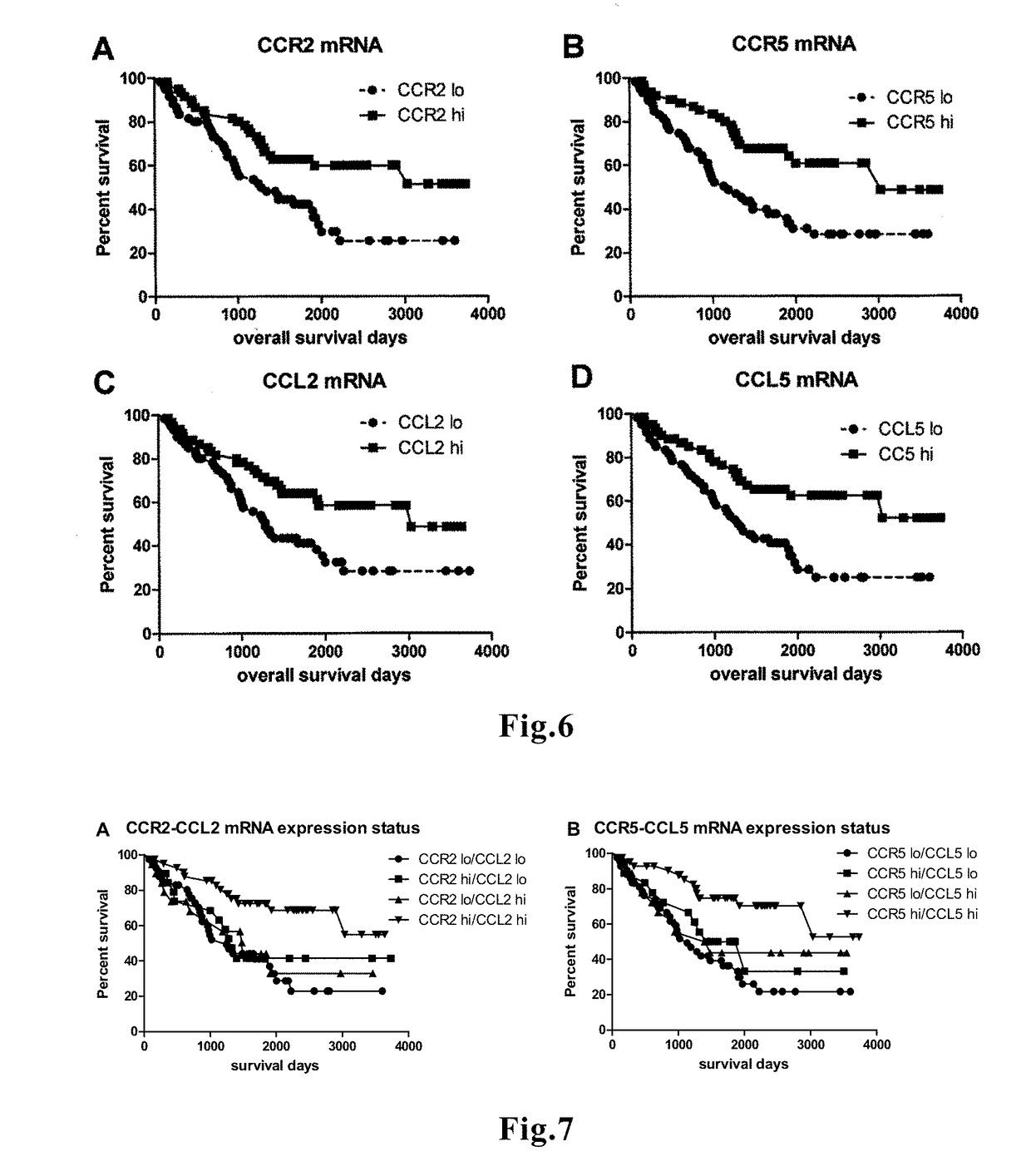Method for predicting prognosis of patient with cancer or inflammatory disease
a technology for predicting the prognosis and patient's disease, applied in the field of predicting the prognosis of a patient with cancer or inflammatory disease, can solve the problems that none of these attempts have been successful, and achieve the effect of good prognosis and more accurate prediction
- Summary
- Abstract
- Description
- Claims
- Application Information
AI Technical Summary
Benefits of technology
Problems solved by technology
Method used
Image
Examples
specific example 1
of Method for Determination of Reference Value
[0041]Expression data and prognostic data in a known patient population are subjected to recursive partitioning analysis to divide the population into a group of poor prognosis patients with high expression of FROUNT (FNT-H), a group of good prognosis patients with low expression of FROUNT (FNT-L), and a group of good prognosis patients with high expression of the CC chemokine receptor / ligand (CC-H). An expression level of the CC chemokine receptor / ligand which distinguishes FNT-H and FNT-L from CC-H can be used as the reference value. For example, when this method is applied to stage I cases (28 cases) in the lung cancer patient population of 68 patients described in the Examples below, the following values are obtained as a reference value, respectively, in terms of the log gene expression level: 1.42 for CCR2; 2.23 for CCR5; and 1.34 for CCL5. Accordingly, for patients with various cancers and inflammatory diseases, preferably for can...
specific example 2
of Method for Determination of Reference Value
[0042]When a patient whose prognosis is to be predicted is a cancer patient, a cut-off value of the expression level of the CC chemokine receptor / ligand gene that significantly distinguishes between a group of known patients at stage I and a group of known patients at stage II or more advanced stage is calculated, and the obtained cut-off value is used as a reference value. Since the concern is whether patients are at stage I (Yes), or stage II or more advanced (No), various statistical analysis methods for binary variables can be employed. Examples of the analysis methods include, but are not limited to, logistic analysis and a support vector machine.
Prediction of Prognosis of Patients Whose Expression Level of CC Chemokine Receptor / Ligand is Less than Reference Value
[0043]In the case of a patient whose expression level is not more than a reference value, the prediction can be carried out in a manner where the higher the expression leve...
examples
[0061]The present invention is described below more concretely by way of Examples. However, the present invention is not limited to the Examples described below. All animal experiments were carried out in accordance with the guideline of the Animal Care and Use Committee of the University of Tokyo.
1. Hyperplasia and Metastasis of Cancer are Reduced in FROUNT-Deficient Mice
[0062]To investigate the role of FROUNT in a tumor microenvironment, mice in which FROUNT was knocked out were prepared using the cre / loxP system. Since complete deficiency of FROUNT causes embryonic lethality, conditional knockout was carried out using a system in which induction of recombination reaction was mediated by tamoxifen.
[0063]A targeting vector in which the genomic region containing exons 15 to 19 of the FROUNT gene was sandwiched between LoxP sequences was introduced into mice, and heterozygous FNTflox mice were crossed to create homozygous FNTflox / flox mice. Subsequently, B6.Cg-Tg(CAG-cre / Esr1*)5Amc / J...
PUM
| Property | Measurement | Unit |
|---|---|---|
| thickness | aaaaa | aaaaa |
| volume | aaaaa | aaaaa |
| size | aaaaa | aaaaa |
Abstract
Description
Claims
Application Information
 Login to View More
Login to View More - R&D
- Intellectual Property
- Life Sciences
- Materials
- Tech Scout
- Unparalleled Data Quality
- Higher Quality Content
- 60% Fewer Hallucinations
Browse by: Latest US Patents, China's latest patents, Technical Efficacy Thesaurus, Application Domain, Technology Topic, Popular Technical Reports.
© 2025 PatSnap. All rights reserved.Legal|Privacy policy|Modern Slavery Act Transparency Statement|Sitemap|About US| Contact US: help@patsnap.com



